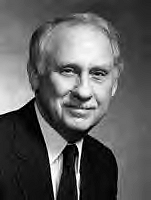For me and folks of my generation, Maury Laws helped make Christmas. More on that shortly.
It’s just a shame more people don’t know about him.
He was part of the Greatest Generation himself, born in North Carolina in 1923. He served in the infantry during WWII, in General George S. Patton’s Third Army. A musician who taught himself the guitar when he was 16 years old, after the war he traveled the country playing and singing with a variety of different musical groups. Eventually he settled in New York and there received formal music training, which led him to his real career in composing, arranging, and conducting.
He appeared on television in the mid-20th century with vocal groups on the Perry Como, Arthur Godfrey, Milton Berle, and Ed Sullivan shows. He wrote arrangements for many of the top recording artists of the 1950s and ‘60s. He also created and performed in commercials for big companies like General Electric, Eastman Kodak, Firestone, and Revlon. His music was performed by a litany of big names from a bygone era: Fred Astaire, Danny Kaye, Angela Lansbury, Burl Ives, Danny Thomas, Art Carney, Judy Collins, John Houston, and Ethel Merman. He composed for off-Broadway theater and scored symphonic works for orchestras around the world.
Maury Laws was a man of tremendous accomplishment.
But I know him most for what I mentioned in my first line above. Because I grew up with one of the big challenges each and every Christmas season of making sure I was home and watching when the Christmas cartoons aired: Rudolf the Red-Nosed Reindeer. Frosty the Snowman. The Little Drummer Boy. Santa Claus is Coming to Town. T’was the Night Before Christmas. And guess what? Maury Laws was responsible for the music in every one of those shows, writing a bunch of it and arranging it all.
(Note to youth: back in the day, shows like this aired one time only each year. There was no such thing as streaming or DVDs, and not even VCRs had come along yet! So you were either there when it showed on TV, or you had to wait another whole year to see it again.)
Those wonderful programs made by Arthur Rankin and Jules Bass were an integral part of Christmas when I was young. And my wife and I have watched them every year since we married (that’s a lot of Christmases), and now our teenage sons have watched them every year too. To say they’re firmly rooted in our Christmas traditions is a bit of an understatement.
And every year, we sing right along with those wonderful songs that Maury Laws put together. Except one…
I think the absolute pinnacle of his work is from The Little Drummer Boy. His “One Star in the Night” brings tears to my eyes every holiday season. His music, the words by Jules Bass, and the singing by the angelic Vienna Boys Choir are pure Christmas magic. (Give it a listen, and you’ll understand why we don’t even try to sing along.)
One Star in the Night
One Star in the Night
Singing silently,
You can hear the music,
if you listen with your heart.
One Star in The Night
Shone o’er Bethlehem,
Magic in the moment
when that lonely star
began its lovely song.
Angel’s lullaby
On that holy night,
Sung unto a Savior
who was born beneath its glow.
One Star in the Night
Rainbow in the dark,
One night to remember;
on that peaceful night
the King of Kings was born.
Most important, of course, is that this particular song is about what Christmas really is. That’s always an important reminder.
One Christmas not too many years ago, after being moved yet again when we watched that show, I tracked down Laws’s website and left a note on his contact form telling him how much I love that song. I received a very nice email reply from him saying how pleased he was that I liked that particular one, as it was one of his favorites too.
In the 1980s, Laws had moved to Appleton, Wisconsin, where he became an active member of the arts community. He passed away there in March, 2019, leaving behind a wife, three children, and numerous grandchildren–heartbroken, I have no doubt.
He’s gone from this Earth. But it’s my fervent wish that his work, especially the part of it that made Christmas that much more enjoyable, will live on here forever.





